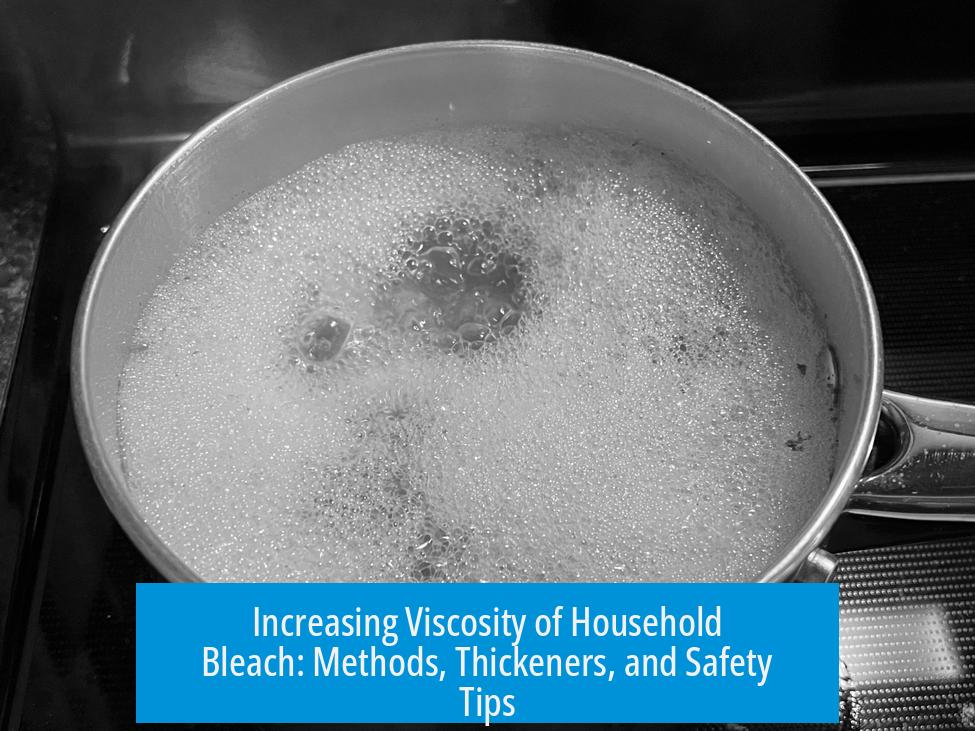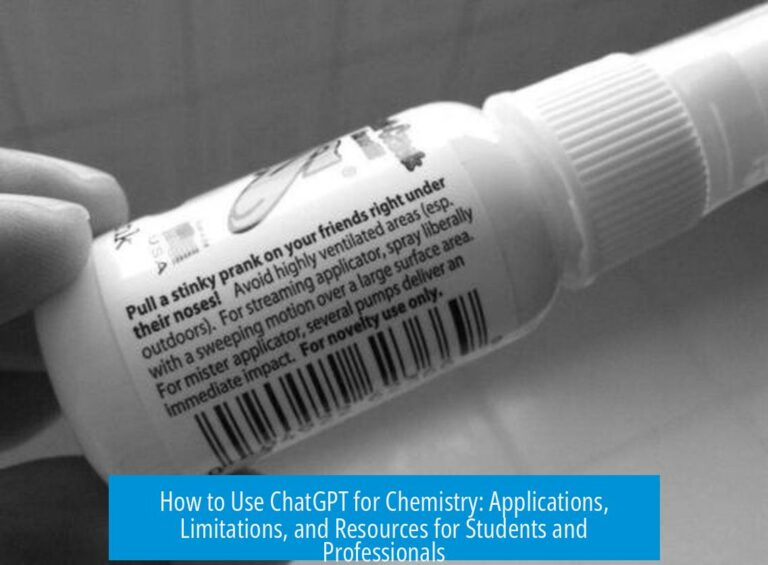Increasing Viscosity of Household Bleach
Household bleach can be thickened by adding specific agents that increase its viscosity without causing adverse chemical reactions or safety issues. This helps the bleach cling better to surfaces and enhances its effectiveness in cleaning and disinfecting tasks.
Challenges with Common Thickeners
Not all thickeners work well with bleach due to its oxidative nature. Many organic thickeners degrade or react undesirably in bleach solutions.
- Aloe Vera: Avoid using aloe vera as a thickening agent. It reacts with bleach, leading to degradation or unsafe products.
- Guar Gum: This polysaccharide shows uncertain stability. It might thicken bleach but can be bleached itself, possibly reducing shelf life and effectiveness.
Effective Thickeners for Bleach
Inorganic Thickeners
Inorganic agents are more stable in strong oxidizing environments like bleach. They provide effective viscosity increase without reacting adversely.
| Thickener | Properties | Usage Notes |
|---|---|---|
| Silica (Fumed Silica / Silica Flour) | Inert ceramic oxide; stable under oxidation | Works well; may dissolve slightly forming sodium silicate; inhalation hazard if dry; keep wet during handling. |
| Kaolin | Natural clay mineral; chemically inert | Can increase viscosity without reacting; easy to obtain. |
| Calcium Acetate | Salt formed from calcium and acetic acid | Available commercially or made by reacting vinegar with calcium sources; an option if silica is unavailable. |
Organic Thickeners Suitable for Bleach
Some starch-based organic thickeners resist oxidation enough to be practical for thickening bleach when prepared properly.
- Cornstarch: Mix cornstarch with water, boil to desired thickness, then cool overnight. Add bleach with stirring to produce a stable gel.
- Commercial gelled bleaches (like Clorox Clinging Bleach Gel) use starch-derived thickeners for consistency and convenience.
Alternative Methods and Life Hacks
Aside from chemical thickeners, some physical methods increase bleach’s sticking time on surfaces.
- Covering a surface with a white absorbent layer such as toilet paper before applying bleach creates a physical barrier, enhancing contact time without chemical modification.
- Diatomaceous earth (DE), consisting mainly of silica shells, can be mixed with bleach to increase thickness and improve application. However, its exact chemical interaction is not fully understood.
Commercial Bleach Thickeners
Several commercial products exist to thicken bleach safely and effectively. These proprietary formulations provide reliable viscosity increase with minimal effect on bleach stability. Examples include products from companies like Dharma Trading and Jacquard Products.
Safety and Handling Considerations
- Powdered thickeners such as fumed silica pose inhalation hazards. Use protective measures to prevent respiratory exposure. Keeping powders wet minimizes airborne particles.
- Bleach is a strong oxidizing agent; thickeners must resist oxidation to maintain stability and safety.
- Mix thickened bleach gently to avoid air entrapment and ensure uniform consistency.
- Allow gels made with starches to rest and cool properly for optimal set-up and long shelf life.
Summary of Key Points
- Organic thickeners like aloe vera and guar gum are generally unsuitable due to chemical reactions or instability.
- Inorganic thickeners such as fumed silica, kaolin, and calcium acetate provide stable viscosity increase and resist oxidation.
- Cornstarch is a practical organic thickener when properly prepared and used at appropriate concentrations.
- Commercial thickening agents offer convenient, tested options for bleach viscosity modification.
- Physical barriers like toilet paper can improve bleach contact time without altering its chemistry.
- Safety precautions are critical when handling powdered thickening agents due to inhalation risks.
How can I safely thicken household bleach without it reacting?
Use inorganic agents like fumed silica or kaolin. These resist oxidation and won’t react with bleach. For organics, cornstarch works well and is safe. Avoid aloe vera and guar gum as they may degrade or react.
What are the risks of using fumed silica to thicken bleach?
Dry fumed silica powder is hazardous if inhaled and can cause lung issues over time. Always keep silica wet during use to prevent airborne dust. Use proper protection when handling.
Is cornstarch an effective thickener for bleach? How should I prepare it?
Yes, cornstarch thickens bleach well without harmful reactions. Boil cornstarch with water until thick, cool overnight, then stir in bleach gently. This produces a gel suitable for cleaning.
Can commercial bleach thickeners be a good option?
Yes, specialized commercial thickeners exist designed for bleach. They offer convenience and stable viscosity. Examples are available from suppliers like Dharma Trading and Jacquard Products.
Are there any non-chemical methods to keep bleach in place longer?
You can apply bleach over a layer of white toilet paper to help it stick without chemical changes. This acts as a physical barrier to prolong contact on surfaces.





Leave a Comment